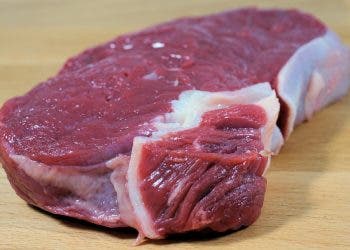A very small percentage of Americans are responsible for eating half of all the beef, according to a new study. Analyzing data from over 10,000 adults participating in the CDC Health and Nutrition Survey, researchers discovered that individuals aged 50 to 65, particularly men, are responsible for disproportionately high consumption of beef.

The quality of the dietary habits of Americans is lacking, to say the least. The typical US diet scores only 59 points on the 100-point Healthy Index (HEI) scale. Part of the explanation comes from excess meat consumption in some specific subgroups. Beyond the health concerns, this issue has other severe environmental impacts due to beef’s high greenhouse gas emissions.
“We focused on beef because of its impact on the environment, and because it’s high in saturated fat, which is not good for your health,” the study’s corresponding and senior author Diego Rose, professor and nutrition program director at Tulane University School of Public Health and Tropical Medicine, said in a news release.
Hoarding all the beef
The main objective of this study was to improve the targeting of educational programs and awareness campaigns geared toward those eating disproportionate amounts of beef. Rose and his fellow researchers were particularly “surprised” that a such small percentage of people are responsible for such an outsized consumption of beef.
Previous research indicated that beef consumption is higher among men, Hispanics, middle-aged adults, and those with less education. However, the results vary by study and by type of meat. The Dietary Guidelines for Americans suggest limiting intake to four ounces of meat, poultry, and eggs combined as part of their daily diet but many exceed that amount.
Overall, 12,2% of adults were classified as disproportionate beef consumers. Males were 1.55 times more likely to eat beef in excess than females, especially those 50 to 65 years old. High school graduates were more likely to be disproportionately beef eaters than college graduates. Notably, no discernible distinctions emerged concerning family size or income.
Those who were not disproportionate beef eaters were more likely to have looked up the US Department of Agriculture food guidance system, the study found. A third of all beef comes from cuts such as steak or brisket. But six of the top 10 sources were mixed dishes such as burgers, meatloaf, burritos, tacos, or pasta.
These findings might offer a straightforward opportunity for disproportionate beef eaters to change their dietary habits.
“If you get a burrito, you could just ask for chicken instead of beef,” Amelia Willits-Smith, study author, said in a news release.
Individuals below the age of 29 and those aged 66 and above exhibited the lowest propensity for consuming substantial quantities of beef, hinting at a generational inclination towards mitigating climate change impacts.
The authors suggest using red meat labels with combined health and environment warning messages to reduce consumption, as well as serving smaller portions and promoting alternatives such as cloned and plant-based ‘meat’. Up next, further studies could look at US beef consumption over time and whether this varies by demographic, socioeconomic, and behavioral factors, the researchers said.
The study was published in the journal Nutrients.






